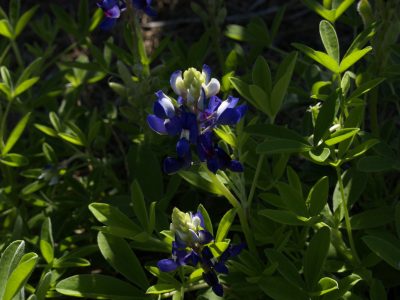My thyme is really woody. What can I do?
Thyme, like many perennial herbs and groundcovers, can get woody, with new growth just at the edges and a woody unsightly center.
This happens a lot with the ones that are marginally evergreen here in Central Texas, since our winters aren’t always cold enough to freeze them to the ground every year.
And while some plants are completely wiped out by frosts and freezes, other plants really need those frosty temps to kill back all of their top growth and make way for new, reinvigorating growth from the roots.
But when those frosty temps don’t arrive, they just keep growing, mostly from the tips, leaving a pretty ugly, and unhealthy, plant.
This happened to me this year, with some thyme that I planted a couple of years ago. It grew quickly, as did the plants surrounding it, and was trailing over the retaining wall in no time. It was so pretty and lush that I just couldn’t bring myself to prune it last year, so this year I paid the price.
The result was an ugly, twiggy mess that finally had to be dealt with. If you have this issue, be brave and cut it all the way back to the ground.
Start by pulling everything away from the center and just cut it all off; even areas of new growth. When you start to pull back and cut, you’ll notice lots of sprouting leaves trying to make their way out from the bottom. But don’t be tempted to leave any of that behind. Cut all the way to the ground. Even if you have one side that’s relatively healthy and green, go ahead and prune that out too.
The plant won’t produce any new growth back in those old, woody areas. It needs fresh, tender shoots to grow from. If your plant is struggling, you can cut it back anytime, but the fall is a great time for this garden chore.
After pruning to the ground in fall, put the plant to bed for the winter. Cover the small twigs and bits of new growth completely with mulch. This will protect and insulate the plant, and encourage it to concentrate on roots for a few months. And next spring it’ll take off like a rocket, refilling the space in no time.

 Paul Lofton
Paul Lofton William Glenn
William Glenn Daphne Richards
Daphne Richards
 Eric Pedley
Eric Pedley